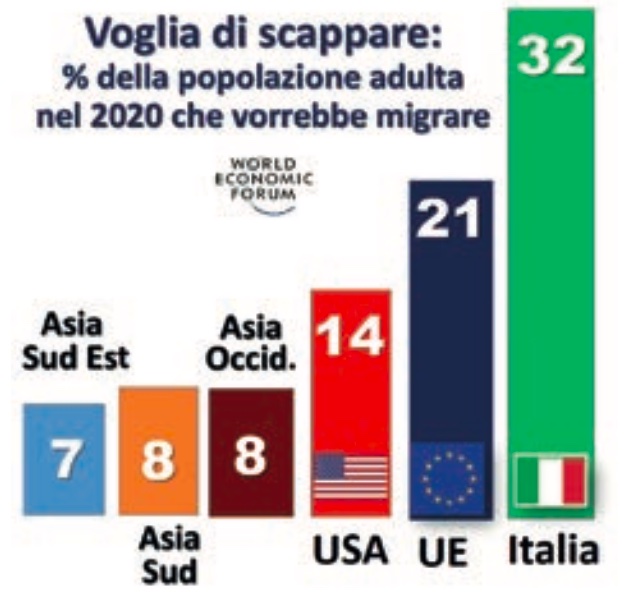Right to migrare
Publish date 01-04-2021
 More than 750 million people around the world, or about 14% of the world's adult population, would gladly leave their country to live elsewhere if they could. According to the results of the latest Gallup poll, the world's most recognized observatory of human mobility, the percentage of people who would willingly migrate has always been increasing during the seven decades after World War II, but it is not equally distributed around the world. And poverty is certainly not the main driver of mobility; many other factors are what load the spring of the push to leave.
More than 750 million people around the world, or about 14% of the world's adult population, would gladly leave their country to live elsewhere if they could. According to the results of the latest Gallup poll, the world's most recognized observatory of human mobility, the percentage of people who would willingly migrate has always been increasing during the seven decades after World War II, but it is not equally distributed around the world. And poverty is certainly not the main driver of mobility; many other factors are what load the spring of the push to leave.
In fact, the happiest peoples are also happy to stay and live where they were born. For example, only 7% of the inhabitants of Southeast Asia and 8% of those of West Asia and South Asia (which includes the high-poverty area of India and Bangladesh) would like to emigrate; while 14% of Americans and 32% of Italians would like to go and live in another country. The Italian figure is the one with the greatest growth compared to the 2010 figures. Furthermore, Italy remains among the undesirable destinations among migrants from poor countries such as those of Africa, who would prefer to migrate to nine other countries.
18 countries attract two thirds of all potential migrants in the world. Therefore, given that Italy, like other European countries, has no laws that prevent the emigration of its citizens, it is probable that the total balance of migratory exchange in the years to come will be negative, with population loss and therefore economic descent. . In practice, the right to migrate, recognized in the Universal Declaration of Human Rights, is also shared by a strong majority of people in every part of the world, without major differences between rich and poor.
 Furthermore, the most important impact of migration on future inclusive prosperity is the quality of migrants, measured by the "brain-gain" rate, the difference between arrived brains and departed brains. From the point of view of the educational level of workers who leave their country, Asia still wins the top three positions, according to research by the World Economic Forum.
Furthermore, the most important impact of migration on future inclusive prosperity is the quality of migrants, measured by the "brain-gain" rate, the difference between arrived brains and departed brains. From the point of view of the educational level of workers who leave their country, Asia still wins the top three positions, according to research by the World Economic Forum.
It is estimated that in 2019 about 120 million migrants live in rich countries; at least 30% of these people have a high educational level.
Of the more than three million migrants in rich countries from India, the share of those with higher education status was nearly 65%. China had a 48.6% rate of highly educated migrants, or 2.25 million. There are in total about 120 million migrants living in rich countries. 30 to 35 percent of these migrants are considered highly educated, which means they have received professional or academic training.
Sandro Calvani
NP january 2021







